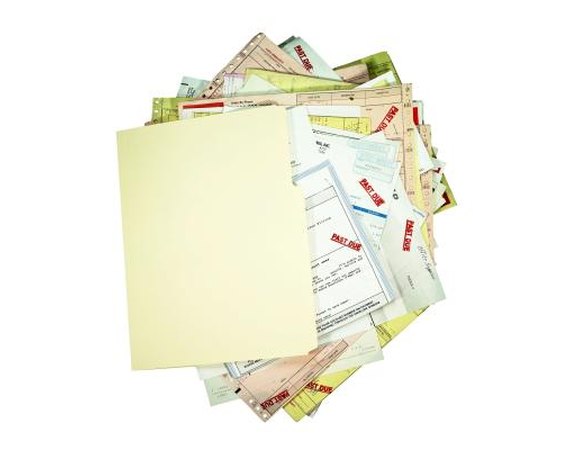
Debt compromises the financial stability of those who have it in most instances. For this reason, retiring old debt is important for moving forward with financial plans and getting back into independence. To retire a debt means to pay it off. Doing this involves more than just working with creditors. It also means creating and sticking to a workable budget and being diligent about asserting your rights for accurate credit validation and reporting. How long it takes someone to get through the overall debt elimination process depends on the amount and type of debt, as well as individual financial circumstances over time.
Instructions
- 1
Gather information such as statements about all the debts you may have from creditors, service providers and others, such as landlords. Send a written request for validation for any debt that seems inaccurate to be sure of the exact amount you owe. Validation means the person or company to whom you send the request should be able to show you how your account got to its current balance. If they cannot do that, you may not be legally obligated to pay.
2Investigate the statute of limitations for the debts you have in your jurisdiction. Individuals and companies often try to collect debts after the statute of limitations has expired and often are successful, but the statute of limitations is a reasonable defense against debt claims.
3Use the results of your data collection, validation requests and statute of limitations research to tally the true amount you owe in old debt. Note interest rates into account when calculating this number.
4Review your assets, property and income to determine your current financial situation.
5Create a reasonable budget given the expenses, assets, property and income you have. The budget should reveal how much you realistically can afford to put toward debts each month. Put a savings allotment into the budget you can tap in emergencies so that you do not fall back on credit or loans in the future.
6Choose a debt repayment plan. Financial advisers generally tell people to use the snowball method. Under this method, you concentrate all your efforts on one debt until it is paid off, making minimum payments on everything else. When that payment is done, you move on to the next debt in the same fashion. Mathematically, it makes more sense to arrange the payments in order of the highest interest rate, but some experts such as Dave Ramsey advocate starting with the lowest balance so as to quickly pay off at least some debt and get the resultant psychological boost and momentum.
7Negotiate with those to whom you owe. Ask for lower rates of interest or lower minimum monthly payments, providing written support for your inability to pay more. Get payment agreements in writing.
8Begin to make payments to those to whom you owe as agreed.
9Track all spending and income by hand or via a spreadsheet. Keep your receipts organized in file folders or another system like a coupon container for easy referral. Compare this to your budget and make adjustments as necessary.
10Toss any extra funds you receive into your savings or at the debt you have.
11Ask those to whom you owe money to send you a written verification that your debt is paid in full once you meet your debt obligations.
12Periodically check your credit report. If you find errors, send a written request to the credit reporting agency, along with supporting documentation, and ask that the errors be fixed. Credit reporting agencies are obligated by law to report properly under the Fair Credit Reporting Act. This law also allows you to ask the reporting agency to send a corrected copy of your credit report to those who received a copy of the report in the last six months.






0 comments:
Post a Comment